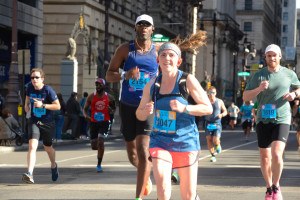These Four Letters Could Help You Keep Your New Year’s Resolution

Shutterstock
If you’re anything like me, in the past 24 hours you’ve made declarative statements like, “I’m never eating white flour again!” or “Today will be the day I stop watching so many Law & Order: SVU marathons!” Then you’ve promptly broken said vows with a bowl of cheese-stuffed ravioli in one hand and a remote control in the other—rinse, repeat.
The phrase “talk is cheap” comes to mind here, but next time I set my lofty goals, I might just be able to keep my word, thanks to this nifty trick: The folks over on Science of Us have clued us in to a four-step technique that research has shown helps people to actually achieve what they set out to do. Like, for instance, it helped people who wanted to eat more fruits and vegetables actually eat more fruits and vegetables—instead of, you know, just saying, “I’m going to eat more vegetables!” and eating pasta instead. Impressive.
Here’s the deal: The four-step technique—with the lovely acronym WOOP—was created by New York University psychologist Gabriele after years of research. According to her, when most of us set goals, we only think about the first two steps of the WOOP technique: This first letter stands for Wish, so declaring what you want. For instance, “I love you, Stabler, but I really want to stop wasting so much time watching Law & Order.” The next step, “O”, stands for Outcome, so thinking of the best possible outcome. Example: “Once I stop wasting so much time watching Law & Order, I’ll have time to do all the really important stuff I want to do, like learn how to fly an airplane.”
Most people stop there, with a whole bunch of positive thinking in place, but no actual planning. According to , that’s a big mistake. The next two steps are crucial: The second “O” in WOOP stands for Obstacles, so after you’ve imagined the best outcome, picture all the roadblocks that could stop you from succeeding. According to her, these obstacles are often emotions—for example, momentary boredom is often the reason I stumble into the black hole that is a Law & Order marathon.
After you’ve recognized your obstacles, you take the final step: Plan. In other words, plan what you’ll do if those obstacles pop up. In my case, I could plan out my evenings so that there is no room for boredom—hey, track with me on this one—and voila! By simply remembering to put the four-letter acronym WOOP into action, this hypothetical me will eventually reach my goal of kicking my Law & Order addiction to the curb. (The real me will keep you posted.)
As I mentioned earlier, found that using the WOOP technique helped folks who wanted to eat more fruits and vegetables actually change their diets, and it also helped students boost their GPAs and individuals act less insecure in their relationships—so WOOP can really be applied to any goal you have, health-related or otherwise. And with New Year’s resolution planning right around the corner, I have a feeling it’ll come in handy.
Like what you’re reading? Stay in touch with Be Well Philly—here’s how:
- Like Be Well Philly on Facebook
- Follow Be Well Philly on Twitter
- Follow Be Well Philly on Pinterest
- Get the Be Well Philly Newsletter


